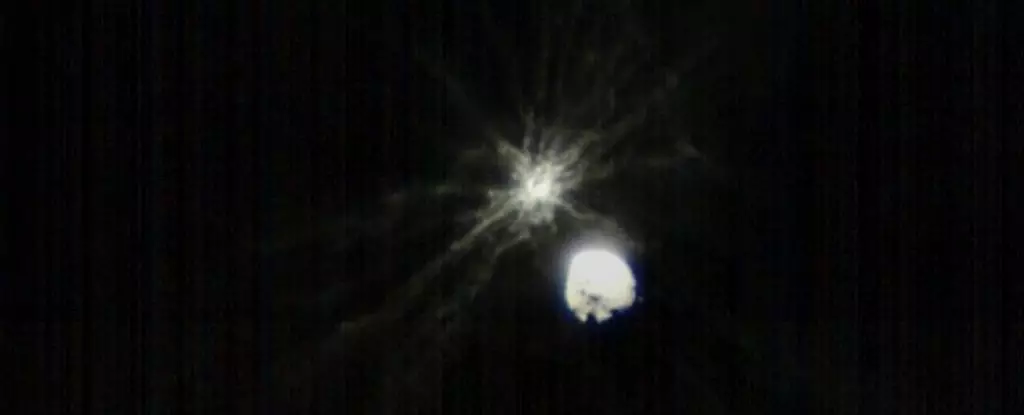A recent compilation of stabilized videos showcasing the impact of the DART spacecraft on the asteroid Dimorphos has given us a fresh look at this remarkable event. Amateur image processor Jacint Roger Perez utilized a collection of raw images to create these videos, offering a unique and captivating perspective. The DART mission, which stands for Double Asteroid Redirection Test, aimed to explore the possibility of altering the course of asteroids that pose a potential threat to Earth. This article examines the impact of DART on Dimorphos and sheds light on the implications of these findings.
The primary objective of the DART mission was to assess humanity’s capability to deflect asteroids on a direct collision course with our planet. For this purpose, the spacecraft targeted a pair of interconnected asteroids in orbit around each other. The larger asteroid, Didymos, spans an impressive 780 meters (2,560 feet), while the smaller one, Dimorphos, measures around 160 meters (525 feet) in diameter. The success of the DART mission hinged on altering Dimorphos’ orbital period through a collision with the spacecraft, effectively diverting its trajectory away from Earth.
The impact occurred in September 2022 and was a spectacle to behold. As DART collided with the rugged surface of Dimorphos, ejecta erupted in fascinating tendrils, exceeding scientists’ expectations. The Italian Space Agency’s LICIAcube, an observation spacecraft that accompanied DART, captured the impact from a distance. Equipped with two cameras, LICIAcube recorded the event to provide valuable data for further analysis. Recently released raw images from LICIAcube’s observation have allowed amateur image processor Jacint Roger Perez to compile a series of videos, showcasing the magnitude of the impact and capturing the subsequent dust filaments that stretched far beyond initial projections.
While the DART mission successfully deflected Dimorphos, the extent of this alteration surprised scientists. Initially, they hypothesized that the transfer of momentum from the spacecraft would be the primary cause of the change in Dimorphos’ orbit. However, the eruption of material from Dimorphos played a more significant role than anticipated. The escaping dust, which persisted for weeks after the impact, contributed a substantial amount of momentum, resulting in a reduction of Dimorphos’ orbital period by 33 minutes. This observation emphasizes the importance of considering the composition of asteroids when planning future asteroid-deflection missions.
The findings from the DART mission offer encouraging prospects for deflecting asteroids on a collision course with Earth. Humanity has demonstrated the ability to alter the trajectory of an asteroid millions of kilometers away. However, understanding the composition and structure of the target asteroid is crucial for the success of future missions. Loose, rubble-filled asteroids may prove more amenable to deflection, as they can lose a significant amount of material upon impact. In contrast, asteroids with a more compact structure would be less likely to experience substantial material loss, making diversion more challenging.
The impact of the DART spacecraft on the asteroid Dimorphos has provided invaluable insights into our capacity to deflect asteroids and protect our planet. Utilizing raw images and amateur image processing techniques, Jacint Roger Perez has offered a fresh perspective on this extraordinary event. The unexpected consequences of the impact, primarily the significant role played by the eruption of material from Dimorphos, highlight the need to consider asteroid composition in future deflection missions. Armed with this knowledge, humanity can continue striving towards safeguarding Earth from potential asteroid threats.



Leave a Reply